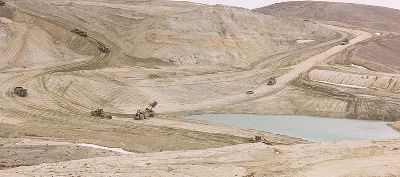
President Obama this week announced a revival of the nuclear power industry with the first new planned new nuke plant in more than 30 years. Obama promised loan guarantees of more than $8 billion.
Why can’t a nuclear power plant get built without the taxpayers promising to foot the bill? Three Mile Island Unit #2 cost $975 million in 1978 (the equivalent of $4.4 billion in 2008 dollars), but operated only three months before an accident took it offline, permanently. What responsible banker wants to take that kind of risk? Then there was the Seabrook Nuclear Station, whose cost overruns caused Public Service of New Hampshire to go bankrupt. At the time, it was the 4th largest bankruptcy in the nation’s history. In the end, the cost of constructing the Seabrook plant, some $6.6 billion in 1986 dollars, was largely borne by the taxpayers and, to a lesser extent, New Hampshire electricity users.
Loan guarantees aren’t the only taxpayer subsidy nuclear power gets. There is no commercial insurance policy to cover a reactor accident. The industry self-insures for the first $10 billion in damages. Anything over $10 billion in costs is covered by the federal government. To put that in perspective, direct cleanup at the Three Mile Island plant cost over $1 billion by 1986. That’s $2.5 billion in 2008 dollars– and the rest of the cleanup was postponed until 2014, when the facility gets mothballed.
It could be worse: cleanup at Chernobyl has still not been completed, and is estimated to cost “hundreds of billions of dollars.” The sarcophagus alone, which encases the failed unit, cost $1.2 billion.
The need for expensive cleanup isn’t limited to accidents. Eight of the ten largest projects funded under Obama’s Economic Recovery Act are for cleaning up nuclear sites– to the tune of $3.5 billion. Your tax dollars at work.
There’s also a lingering question of public safety. A 2009 study found elevated child leukemia rates in counties that have nuclear power plants. A study announced just last month showed elevated rates of thyroid cancer in Pennsylvania counties that have nuclear power plants.
Would our government lie to us about the safety of radiation? We need not speculate: read Divine Strake and the Downwinders. For almost 40 years, the feds denied that nuclear tests at the Nevada Test Site had any ill health effects. Yet in my county alone, “downwinder” claims were later approved for more than 10% of the county’s population who had been poisoned by radiation.
It’s widely presumed that coal is the logical alternative to nuclear power, and that anyone who opposes nuclear plants supports coal. But one option almost never mentioned is conservation. Some 70% of the energy we generate in the U.S. goes to waste, either at the generating facility or through inefficient transmission and use. The potential exists to cut our energy needs by half, just by cutting waste.
Why do our leaders insist that we need expensive and detrimental new nuclear and/or coal plants? Perhaps because there’s no political mileage, and fewer construction jobs, in conservation. It requires no new mining, and it doesn’t increase property tax revenues. There’s little political upside to using less energy– we need to build something.